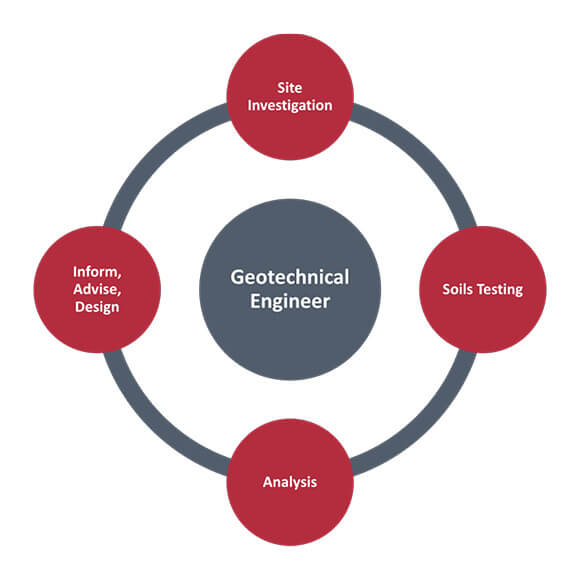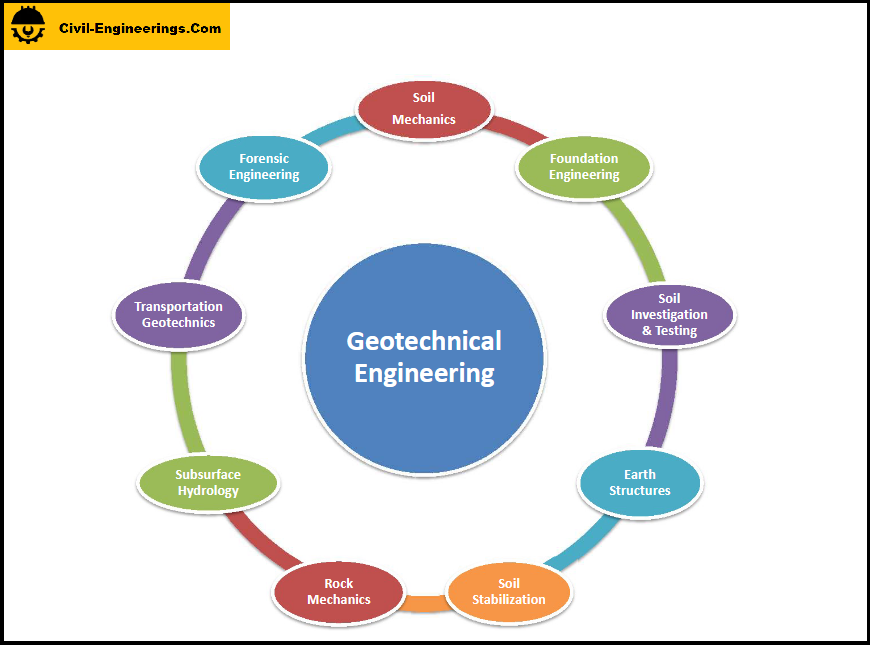Not known Details About Specialized Geotechnical Engineering Solutions
Wiki Article
Things about Specialized Geotechnical Engineering Solutions
Table of ContentsWhat Does Specialized Geotechnical Engineering Solutions Mean?Specialized Geotechnical Engineering Solutions Fundamentals ExplainedThe Greatest Guide To Specialized Geotechnical Engineering SolutionsSome Known Facts About Specialized Geotechnical Engineering Solutions.
They conduct website examinations, gather samples, perform research laboratory examinations, and assess data to review the suitability of the ground for building tasks. Based upon their findings, geotechnical designers provide suggestions for foundation style, slope stability, preserving frameworks, and reduction of geotechnical hazards. They work together with other professionals, such as architects, architectural engineers, and building teams, to guarantee that geotechnical considerations are incorporated right into the general project design and application.
Structure Style: Geotechnical engineers play a crucial function in making foundations that can safely support the intended framework. They examine the dirt problems and lots needs to establish the proper foundation kind, such as superficial structures (e.g., footings), deep foundations (e.g., heaps), or specialized techniques like soil enhancement. They think about variables such as negotiation restrictions, bearing capacity, and soil-structure interaction to develop optimal structure layouts.
The 9-Second Trick For Specialized Geotechnical Engineering Solutions
Below are some kinds of geotechnical designers: Foundation Engineer: Structure engineers concentrate on creating and evaluating structures for frameworks - Specialized Geotechnical Engineering Solutions. They assess the dirt problems, lots needs, and site attributes to establish one of the most ideal structure type and style, such as shallow structures, deep structures, or specialized methods like heap structuresThey carry out field screening, collect samples, and analyze the gathered data to characterize the soil properties, geologic formations, and groundwater conditions at a website. Geotechnical Instrumentation Designer: Geotechnical instrumentation designers focus on tracking and measuring the actions of dirt, rock, and structures. They install and maintain instrumentation systems that keep track of elements such as soil settlement, groundwater degrees, incline movements, and architectural variations to analyze efficiency and offer early cautions of potential issues.
In the workplace environment, geotechnical designers use specialized software devices to do calculations, produce designs, and analyze information. Specialized Geotechnical Engineering Solutions. They prepare reports, evaluation task specifications, communicate with clients and group members, and coordinate job tasks. The office setup gives a helpful environment for research, evaluation, and cooperation with other experts involved in the job
They often check out job websites to carry out website investigations, analyze geotechnical problems, and gather information for evaluation. These visits include taking a trip to different areas, in some cases in remote or difficult surfaces. Geotechnical designers might carry out dirt tasting, conduct tests, and monitor construction activities to ensure that the geotechnical elements of the job are being applied correctly.
Not known Facts About Specialized Geotechnical Engineering Solutions
Geotechnical designers also operate in specialized geotechnical labs. In these centers, they perform experiments, do examinations on soil and rock samples, and assess the design properties of the products. Geotechnical lab engineers work extensively in these environments, handling screening devices, running tools, and recording data. They collaborate with other laboratory personnel to guarantee accurate and trustworthy testing outcomes.Preserving Walls: Creating walls that keep back dirt to avoid landslides and offer security on sloped surfaces. Embankments and Earthworks: Designing embankments for roads, railways, and dams to ensure they stay secure under stress and anxiety. The mining market depends greatly on geotechnical design to ensure the safety and long life of its operations.
With this in mind, we have developed our program to prepare students for success. The Geotechnical Design program at the University of Delaware supplies opportunities for sophisticated research study and research in: Dirt and rock auto mechanics Soil-structure interaction Constitutive modeling Computational geomechanics Foundation and earth frameworks design Ground enhancement Slope stability and landslide stabilization Liquefaction of soils and earthquake design Laboratory characterization of geomaterials and soil support Environmental geotechnics Offered the strong need for enhancement to our nation's infrastructurethe American Culture of Civil Designers provided the united state
Geotechnical design is a branch of civil engineering; however, it includes making use of scientific methods and concepts to accumulate and translate the physical residential or i thought about this commercial properties of the ground. Geotechnical designers are involved in all stages of the layout of frameworks, from principle to building. Their work is vital in the layout and preparation process as they examine the integrity of soil, clay, silt, sand, and rock, before building and construction beginning.
An Unbiased View of Specialized Geotechnical Engineering Solutions
This is followed by a ground investigation based on the findings of the desk research and entails trial matching and tasting to discover any type of possible concerns. Geotechnical designers function within multidisciplinary groups, supported by intermediate and jr engineers in addition to by CAD technicians. As a senior geotechnical engineer on a hydro plant job, tasks might consist of getting involved in technological reviews (e.g., peer reviews), tailings internet dam examinations, dam safety evaluations, and various other research studies related to the design and construction of mine waste centers.
While some professionals specialise entirely in geotechnics, others may function under titles like design geologist or ground designer within similar capacities. As a geotechnical designer, you'll need to: develop and preserve partnerships with clients and other professionals associated with the website, throughout each projectmaintain safety standards on website bear in mind price implications when you make recommendationsstudy geological maps and airborne photos from a series of resources and from different time periodsexamine building plans to see exactly how possible they are based upon your understanding of the siteinvestigate dangers or geological threats for the sitesearch for eco delicate attributes, such as land fill begin to establish factual and interpretive ground modelsplan field investigationsdrill and evaluate examples of bedrock, soil, groundwater and added materials oversee various other this contact form specialists on sitesolve technological problems as they arise, such as unanticipated structures at drill sitesmonitor conditions during and after construction to make certain frameworks are steady in the brief and long termadd data collected on site to your initial researchcreate geotechnical estimations, drawings, and two or three-dimensional computer models translating the datamake suggestions regarding the suggested usage of the site.
There are great deals of opportunities to fulfill brand-new people, as you'll work with a series of professionals at every website. The job can be demanding as you might be in charge of the security of others while on website. There is additionally a high level of financial responsibility, as the referrals you make can have major price ramifications.

Report this wiki page